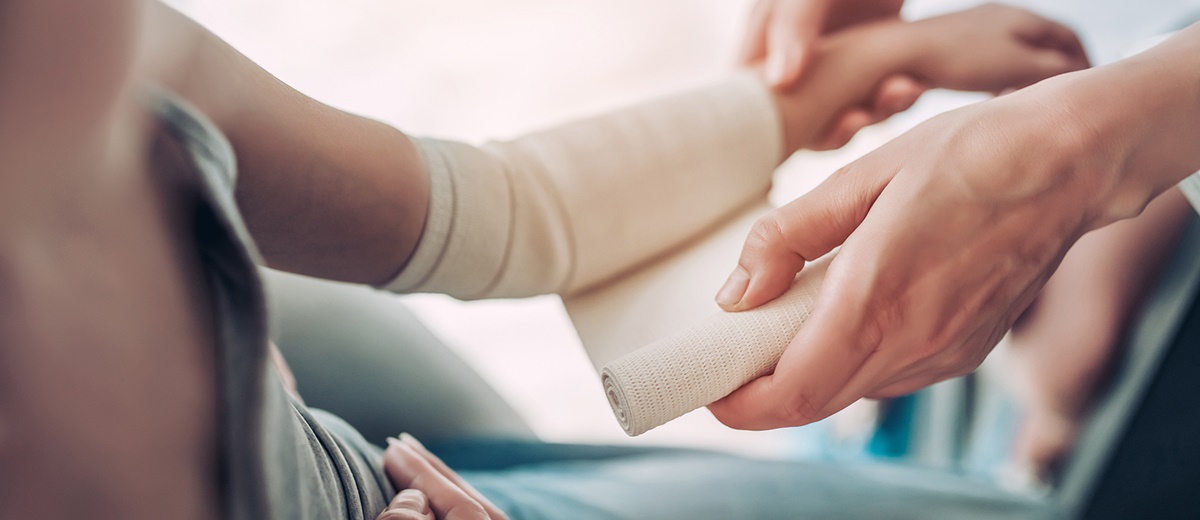School nurses have an array of wound dressing options from sterile gauze pads to absorbent bandages to adhesive tape and more. In a previous blog, we reviewed that even though regular adhesive bandages come in a variety of shapes and sizes, they all contain a small dressing to protect the wound from friction, bacteria, and damage that would disrupt healing. To review the different types of bandages, click here.
But what about other types of wound dressings? Here are the basics you should know:
- Gauze pads can be used for various sizes of wounds. They come in sizes including 2 x 2 inches, 3 x 3 inches, 4 x 4 inches and all the way up to 5 x 9 inches or larger.
- Gauze rolls come in various lengths and sizes and can be wrapped around any wound to offer protection. They can also be used to hold a gauze pad in place.
- Medical adhesive tapes are used for closing wounds and holding bandages in place. They come in a variety of lengths, widths, and styles.
- Pressure bandages are best described as a conforming gauze roll bandage that contains an inner absorbent layer of cotton to be applied to a wound. The rolled gauze is then applied around the cotton pad to hold it in place.
- Elastic stretch bandages provide compression and controlled pressure and are self-closure or held in place with clips.
- Self-adherent wraps function like a tape but contain a cohesive material that makes it stick to itself but not to other materials or skin.
- Butterfly closures are used to pull both sides of a cut together to promote healing and help prevent infection.
- Triangular bandages unwrap to a large flexible triangular sheet which can be used to sling an arm or wrap around a wrist or head injury.
- Sterile burn dressings prevent infection without sticking to the burned area while drawing heat out. Their construction resists tearing and conforms to the body. The burn sheet may be used as a wet or dry dressing.
- Steri-strip closures are pre-cut and reinforced for extra strength. They minimize the risk of superficial wounds opening during healing and are great to close superficial wounds until the injured person can get stitches.
- Eye patches are placed over a wounded or infected eye.
After cleaning a wound and applying a topical antibiotic, the next step is to cover the wound with one of the above dressings. A covered wound has less chance of infection and scarring and will heal faster.





